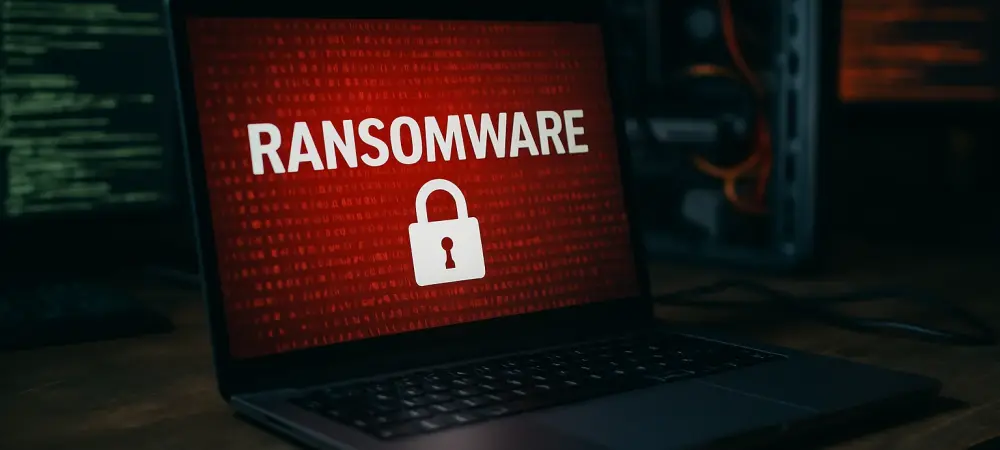In a startling revelation that underscores the escalating cyberthreat landscape, ransomware attacks have skyrocketed by an alarming 179% in the first half of this year compared to the same period last year, highlighting a critical challenge for global cybersecurity. This surge, driven by the proliferation of ransomware-as-a-service (RaaS) models, has transformed the nature of cybercrime, making it accessible to a wider array of threat actors with varying skill levels. The RaaS framework allows less experienced cybercriminals to partner with seasoned operators and affiliates, drastically increasing the frequency and scale of attacks. This alarming trend paints a grim picture of an evolving digital battlefield where organizations, regardless of size or sector, find themselves increasingly vulnerable to sophisticated extortion schemes. As the tactics of these malicious groups adapt and diversify, the urgency for robust cybersecurity measures has never been more critical.
Emerging Threats in the Cybercrime Ecosystem
Dominance of Key RaaS Players
A handful of RaaS groups have emerged as the most prolific perpetrators behind the dramatic rise in ransomware incidents. Leading the pack is Akira, recognized as the most active group in terms of attack volume, closely followed by Cl0p, which has gained notoriety for exploiting zero-day vulnerabilities in managed file transfer solutions. Such exploits have caused widespread disruption across industries. Other significant players include Qilin, which drew global attention with a devastating attack on a UK National Health Service partner, and RansomHub, a newer entrant that has already targeted US government entities. Additionally, an emerging group named Weyhro is making waves with innovative approaches to cyber extortion. The fluid nature of these groups, often seen in rebranding or potential disbandment as with RansomHub, complicates efforts to track and mitigate their activities, highlighting the need for constant vigilance.
Evolving Strategies and Rebranding Tactics
Beyond their sheer volume of attacks, these RaaS groups demonstrate remarkable adaptability through strategic shifts and operational tactics. A common practice involves rebranding or reusing leaked source code from defunct gangs like LockBit and Conti to evade law enforcement scrutiny and relaunch operations under new identities. This recycling of malicious tools ensures continuity for cybercriminals even after significant disruptions. Groups like Safepay exemplify this trend, emerging from the ashes of older operations with renewed vigor. Such maneuvers not only sustain the ransomware ecosystem but also challenge defenders to anticipate the next iteration of these threats. The persistent reinvention of these groups underscores a cat-and-mouse game where staying ahead requires not just reaction, but proactive prediction of criminal innovation.
Shifts in Attack Methods and Industry Impact
From Encryption to Extortion-Only Models
A notable transformation in ransomware tactics is the pivot away from traditional encryption-based attacks toward pure extortion models that focus on data theft. Groups like RansomHub and Weyhro are increasingly threatening to leak sensitive information rather than locking systems, placing immense pressure on victims to pay ransoms to prevent reputational damage. This shift reflects a calculated move to exploit the growing value of data in the digital economy. Meanwhile, the cautious integration of artificial intelligence tools, such as large language models for crafting phishing campaigns, hints at future complexities in ransomware operations. Though not yet widespread, this trend signals a potential escalation in the sophistication of attacks. Defending against these evolving methods demands a deeper understanding of both technological and psychological tactics employed by cybercriminals.
Targeted Sectors and Persistent Vulnerabilities
Certain industries bear the brunt of this ransomware epidemic, with manufacturing and technology sectors identified as primary targets due to their critical infrastructure and valuable data. Geographically, the United States stands out as the most affected nation, facing a disproportionate number of attacks compared to other regions. A significant underlying issue fueling this crisis is the failure of many organizations to address known vulnerabilities through timely patching. Despite the availability of fixes, unpatched systems remain a gateway for threat actors who exploit these gaps with proven effectiveness. Often, post-access, attackers employ living-off-the-land techniques, using legitimate tools within a network to escalate privileges and mask their activities. Addressing these security lapses through robust patch management and proactive monitoring is essential to curbing the relentless wave of ransomware incidents.
Reflecting on a Growing Digital Menace
Lessons from a Challenging Landscape
Looking back, the dramatic 179% surge in ransomware attacks during the first half of this year revealed the profound impact of the RaaS model, which lowered barriers for cybercriminals and amplified the scale of threats. The dominance of groups like Akira, Cl0p, and Qilin, alongside emerging players, showcased a spectrum of tactics from zero-day exploits to pure extortion. Their ability to adapt through rebranding and reuse of leaked code illustrated a persistent challenge for defenders. The targeting of key industries and exploitation of unpatched vulnerabilities further compounded the crisis, exposing systemic gaps in cybersecurity readiness. This period served as a stark reminder of how quickly the digital threat environment could evolve, pushing organizations to rethink their defensive postures.
Charting a Path Forward
As the dust settled on these alarming developments, the focus shifted to actionable strategies for mitigating future risks. Organizations were urged to prioritize timely patching of known vulnerabilities, a fundamental step that could have prevented many of the incidents recorded. Investing in advanced threat detection and employee training to recognize phishing attempts became critical in countering evolving tactics, including those potentially enhanced by artificial intelligence. Collaboration with law enforcement and industry peers to share threat intelligence offered a way to stay ahead of rebranded or emerging groups. Ultimately, building a culture of resilience through regular audits and incident response planning emerged as a cornerstone for navigating this dynamic landscape, ensuring that lessons from past challenges informed stronger defenses against the next wave of cyber threats.

